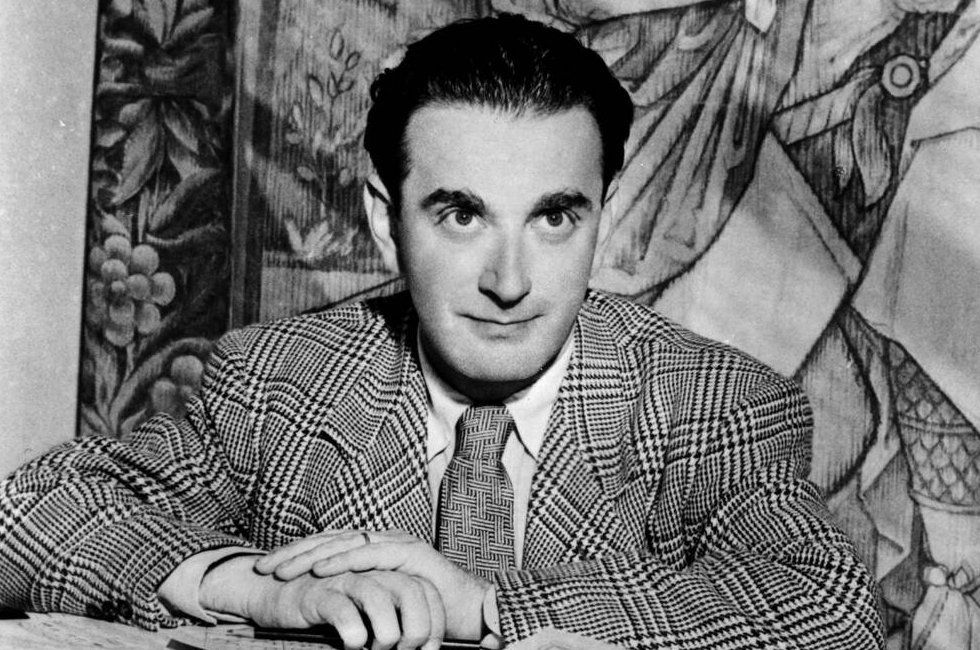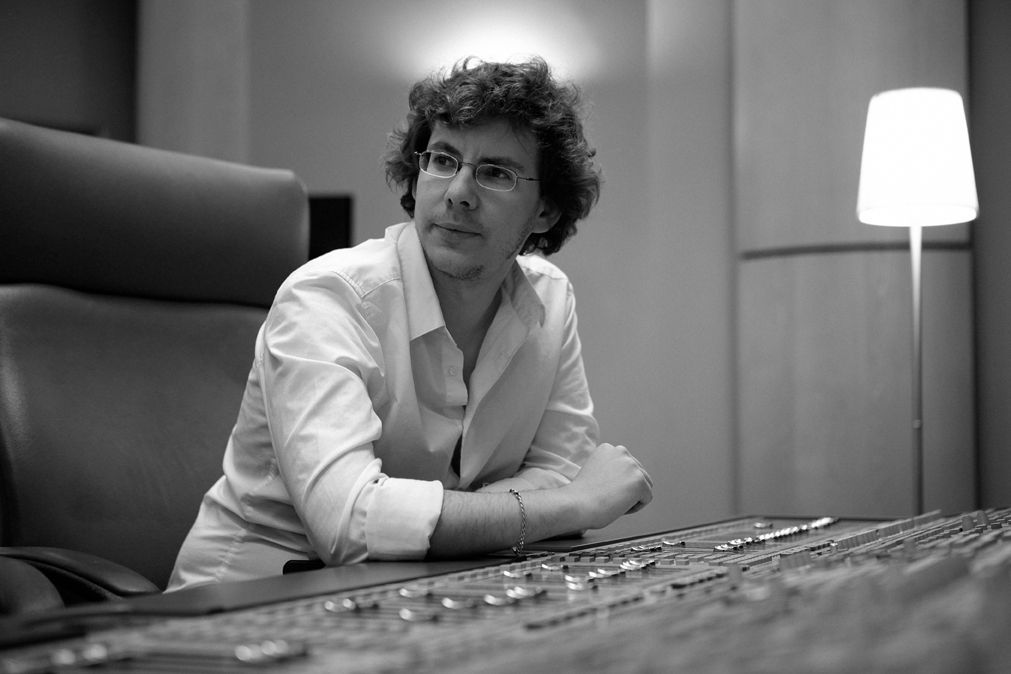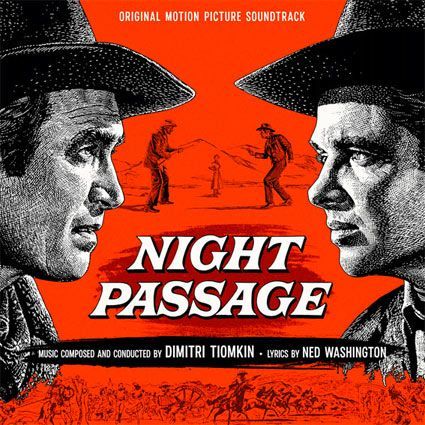Miklós Rózsa

Film Music Notes: March - April 1951
Publication: Film Music Vol.X / No.5 / pp. 4-6
Publisher: New York: National Film Music Council © 1951
Although Miklós Rózsa is a very genial and charming gentleman, with a ready and sometimes mordant wit, he occasionally finds it advisable to cloak his social talents beneath the professional dignity that is his by virtue of a doctor's degree and a chair on the faculty of the University of Southern California. When he wears this prim and proper manner it is difficult to believe that he is the film composer who climbed to the top rank of his profession as an expert in music for oriental romances and psychological melodramas. Yet he actually won his first successes with the scores for Alexander Korda's THE THIEF OF BAGDAD and THE JUNGLE BOCK. On the whole his musical orientalism was of the synthetic sort promulgated by the Rimsky-Korsakoff circle. This was no detriment to popularity, although it was roundly condemned by the avant-garde critics of the “little magazines,” who apparently did not realize that genuine oriental music would have been completely out of place in films that were themselves unauthentic in every oriental detail. JACARE, which was like its predecessors but with a Brazilian coloring, ended the exotic phase (1940-42) of Rózsa's film career, except for SCHEHERAZADE (1946), Universal's film based on the early life of Rimsky. It was not a very good film, but it was said by a wag that Rózsa had earned it by his disservice to the Orient.
With SPELLBOUND he made himself an authority on the musical representation of psychotic states. At the same time he made the theremin the official voice of neurosis. This unmusical instrument, once described as the collective voice of forty thousand wailing women, had been used in films many times before. But no one had chosen just the right moment to associate its banshee howl with the anguish of a disordered psyche. And no one had had the foresight, or the luck, to use it in a film starring Ingrid Bergman. Miss Bergman, the theremin, and disordered psyches rose together to new heights of popularity.
SPELLBOUND won Rózsa the 1945 Academy Award. It threatened also to set the course of his future. He was “typed.” The theremin became his hallmark just as the sarong had become Dorothy Lamour's. Fortunately, however one more picture, THE LOST WEEKEND, proved to the front offices what musicians (Rózsa above all) knew instinctively, that the theremin had had its brief day of glory and that it was now time to turn off the electricity. Rózsa was now able to move on to more normal cinematic tasks, such as composing music for plain murder stories like THE STRANGE LOVE OF MARTHA IVERS, THE MACOMBER AFFAIR, and THE KILLERS. With A DOUBLE LIFE he returned atavistically to psychiatry, but this time without benefit of the theremin.
Rózsa is Hungarian born and German educated. His musical traditions are thus middle-European, though they have been seasoned with French and even some Russian influences; and they date principally from the early twentieth century. The most conspicuous elements of his style were pointed out by Robert Nelson in a brief but illuminating discussion of the score for THE KILLERS: “neurotic, violent, emotionalism ... sharp accents, fragmentary rhythms, melodies of tortured chromaticism … thick and powerful (textures) … an insistence upon small melodic figures, sometimes treated sequentially but more often in a kind of modified repetition ... a harmonic style compounded of dominant-centered tension chords, chromaticism, and general indefiniteness of key.” *Dr. Nelson's analysis is accurate, and it could be accepted as an authoritative generalization were it not for another stylistic element that has become prominent in scores composed later than THE KILLERS.
A new element, to be added to Dr. Nelson's enumeration, is polyphony. This texture permeated much of the Concerto for String Orchestra (l943), where it unfortunately smacked slightly of the academic. **Rózsa's preoccupation here with canonic and fugal devices resulted in a kind of emotional dryness that was curiously at odds with the sumptuous sound of the Concerto as a whole. But where an undue emphasis on counterpoint was a weakness in the Concerto, a necessarily limited use of it has strengthened the film music immeasurably. It was in the score for A DOUBLE LIFE, particularly in the theatre music in concerto grosso style accompanying the OTHELLO scenes, that this writer first became aware of any significant use of polyphony. In subsequent scores it became increasingly noticeable, and there are full-fledged fugatos in the scores for THE SECRET BEYOND THE DOOR and THE NAKED CITY. Now there is nothing especially virtuous in the writing of fugatos, and I cite them only to indicate the kind of change that has taken place in Rózsa's musical thinking. It is not an exaggeration to say that the large, sustained brass sonorities typical of the earlier scores are now being dissolved into their component parts and given linear configurations. This marks a shift from luxury of sound to muscularity, from static sonority to forward motion, from the eloquence of rhetoric to the eloquence of gesture. In part it answers the need, in film music, for a stricter and more formal logic than that provided by the Wagnerian symphonic style that has for so long dominated film music. It is perhaps not possible to find in Rózsa's music a consistent line of development in these matters. Like every film composer with a new idea, he has advanced cautiously, and within the limitations imposed by each film. But if one compares the SPELLBOUND music with that for ASPHALT JUNGLE it becomes immediately apparent that Rózsa has not stood still for six years. He is moving in the same direction as the more progressive of his colleagues. This is in every way a hopeful sign and it could conceivably have the result of bringing film music more in line, stylistically, with the best trends in contemporary concert music.
Rózsa is now in England recording the score for QUO VADIS. He out lined some of the problems of scoring this film in a paper read recently before the California chapter of the American Musicological Society. Like all historical films, QUO VADIS poses the problem of what to do about period music - in this case the music of Nero’s Rome. Since very little is known about it, absolute authenticity is of course impossible. Rózsa's solution of the problem is the result of careful research and much thought, and the results are certain to be interesting. Also, they are likely to be controversial. When the arguments begin, Rózsa will be ready, armed with the dignity of his doctor's degree and the authority of his professorship.
* Nelson, Robert U. “The Craft of the Film Score”. THE PACIFIC SPECTATOR, Vol.1, No. 4, Autumn, 1947.
** Rózsa has kept up his interest in concert music. Beside the Concerto he has composed in recent years a Piano Sonata (1948), a String Quartet (1950), and many smaller pieces. This aspect of his musicianship was reflected in the excellent taste with which he handled Chopin's music in A SONG TO REMEMBER.



